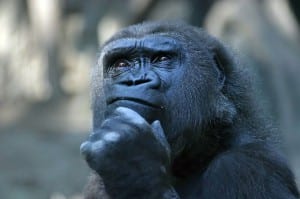This is another installment in my “A Deeper Look” series peeling back the layers of Outside In to better understand the meaning of various aspects and characteristics of the novel.
Reviews are such a big part of the book selling process. Whether the reviews are professional or amateur, from book critics, bloggers, or online posters, they all help create awareness for new books and guide prospective readers on what to buy. Authors and publishers accept this and prepare themselves that not everyone will like the book and criticism is a an integral part of the feedback loop. Ultimately criticism provides another lens through which to view the work and ultimately grow professionally.
Occasionally, however, facts and details about the story get misinterpreted or misunderstood and need to be clarified. As discussed in some of the other Deeper Look posts, following are the main reasons for my writing Outside In:
> Represent the Prevalence of Erik Erikson’s “Quarter-life Crises” Inducing Feelings of Isolation and Loneliness in Twenties to Early Thirties
> Draw Attention to the Immaturity and Delayed Rites of Passage Due to the Abundance of Choices and Extended Periods in Higher Education and Living at Home with Parents
> Raise Awareness of Societal Issues with Self-Medication and Addiction Through The Pursuit of Excess and Instant Gratification
Following are five things mentioned by reviewers to reconsider:
1) “The story is the author’s life story.” While I have used a few details from my own life, such as I was a teacher in St. Louis and I spent a few summers at Put-in-Bay, I am not the lead character Brad Shepherd. The details from my own life that I used were done so because they best fit the character or plot development and also, as mentioned in the Literary References blog post, I am paying tribute to The Portrait of the Artist as a Young Man by James Joyce as he did the same in his creation of Stephen Dedalus, his fictional alter ego. In addition, I’m having fun with the tendency of first novels to be autobiographical, leaving it up to the reader decide what actually happened and what is fabricated for the story.
2) “I didn’t relate to the drug use.” Well, I should hope not. In addition to the third bullet above, the excessive alcohol and drug use are exaggerated to symbolize the modern trials people face in their journeys of becoming. They start as recreational experimentation and the exploration of new experiences and quickly escalate in amount and frequency. This is done to show how easily people can fall into addiction, not even realizing it and completely losing themselves in the process.
3) “The characters frustrated me.” This is another intended response. Much like many of the flawed characters in the current popular television dramas, the characters in Outside In are intended to reflect the proliferation of self-centered and excessive behavior in modern culture. The characters function as a mirror to show the less desirable traits we all possess, and all are in one way or another lost. To find their way, they put themselves in environments to create the image of who they think they should be instead of allowing their trues selves to emerge.
4) “The book was not a mystery.” While there is some uncertainty about what the lead character will do, Outside In was never intended to be a mystery. It is literary fiction, which could be further specialized in the emerging category of new adult focusing on characters in their twenties to thirties confronting issues with identity, career and relationships. It is also categorized as a bildungsroman (novel of becoming), more commonly referred to as a coming of age story, but focuses on the moral and psychological growth of the protagonist ten years later in life than the traditional works in the bildungsroman genre.
5) “Plot was lacking in direction.” This is also a conscious choice and related to Outside In’s categorization as literary fiction, which is more character-driven than plot-driven like mainstream or other fiction genres. The events and actions intentionally wander and unfold in a way to represent the lost and searching aspect of the characters. The characters talk more about passion and living life to the fullest rather than doing anything except escaping to whatever to whatever vice is available. It is this contradiction and the layered characters and complex emotions and what they mean in a broader societal context that are at the core of the story more than solving something by adding up a series of events.
This post is by no means intended to refute others’ opinions. All views are welcome and appreciated. These are just additional points to consider and an attempt to continue the dialogue and discussion regarding Outside In. Feel free to comment your views on the points above or pose new questions via Facebook, Twitter, or Goodreads.

